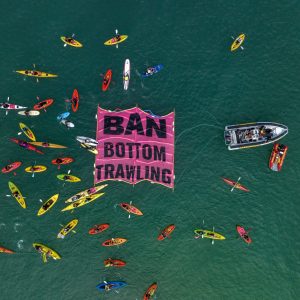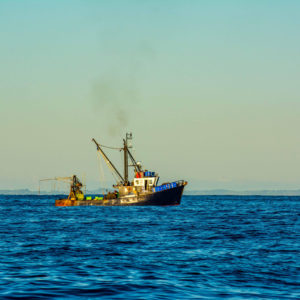You can’t beat a Summer’s day out in the Hauraki Gulf, coming home relaxed and refreshed and if you’re lucky, a couple of fish in the chilly bin.
What you don’t expect, is the horrifying sight of hundreds lifeless snapper drifting in the sea. This is exactly what happened back in February. It was heartbreaking to see such beautiful kaimoana going to waste.
According to Moana New Zealand the dead fish were discarded by commercial vessels due to a power outage, forcing the crew to manually haul in the large nets, splitting it several times.
As to be expected, people were outraged by the incident. It made headlines across New Zealand. Mainly because it happened in plain sight. But how could a simple gear failure result in such vast mortality? This prompts us to question the incidents we don’t see or hear about.
In 2022, Fisheries New Zealand confirmed there would be a staged rollout of cameras on all commercial vessels, with the footage compared to the vessel’s catch reports.
This decision offers transparency and holds the commercial industry accountable. It’s worth asking the question – if there is nothing to hide, why wouldn’t you embrace transparency?
However, the Minister for Ocean and Fisheries, Shane Jones, is threatening to scrap the rollout of cameras, possibly to shield the commercial fishing industry from the consequences of illegal fish dumping or misreporting catch.
After a decade of discussions, abandoning the rollout of cameras on boats would lose the public’s trust in an industry that has repeatedly violated strict regulations.
Having cameras onboard is a step in the right direction. However, it will not improve the state of our marine environment.
We need to prioritise sustaining our precious marine resources and feeding Kiwi families. This happens through restoring coastal fish populations to a minimum of 50% of their original populations (being pre-industrial fishing level).
Non-selective, bulk harvesting fishing methods are still allowed in our coastal waters and one of the implications of this is that dumping fish isn’t an infrequent occurrence.
The commercial vessel involved in this incident is likely to be a bottom trawler, one of the three highest ranking threats to New Zealand marine habitats1. It’s easy to understand why when it involves dragging weighted nets along the bottom of the sea floor, crushing marine life including crabs, shellfish and invertebrates.
The sizable loss and waste from a simple system failure is not good enough. Perhaps if these destructive methods had been banned initially, the dumping of hundreds of snapper could have been avoided altogether. Just imagine how many families the fish could have fed.
Ironically, the industry will be the cause of its own undoing if we continue on this current trajectory as there will be nothing left to catch.
We cannot afford to continue wasting precious kaimoana and destroying our marine environment.
If we want our moana to be abundant and diverse, we need to restore coastal fish populations and remove destructive fishing methods. Then as a community we would reap the rewards, both socially and economically.





